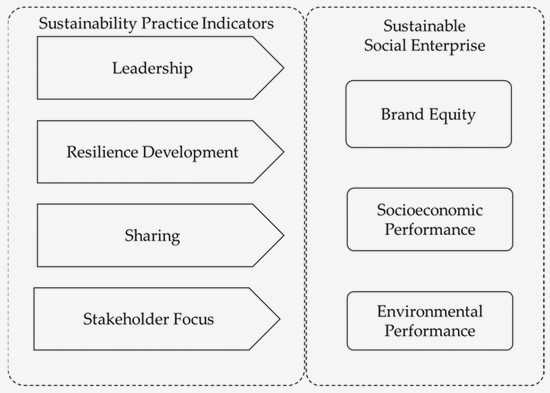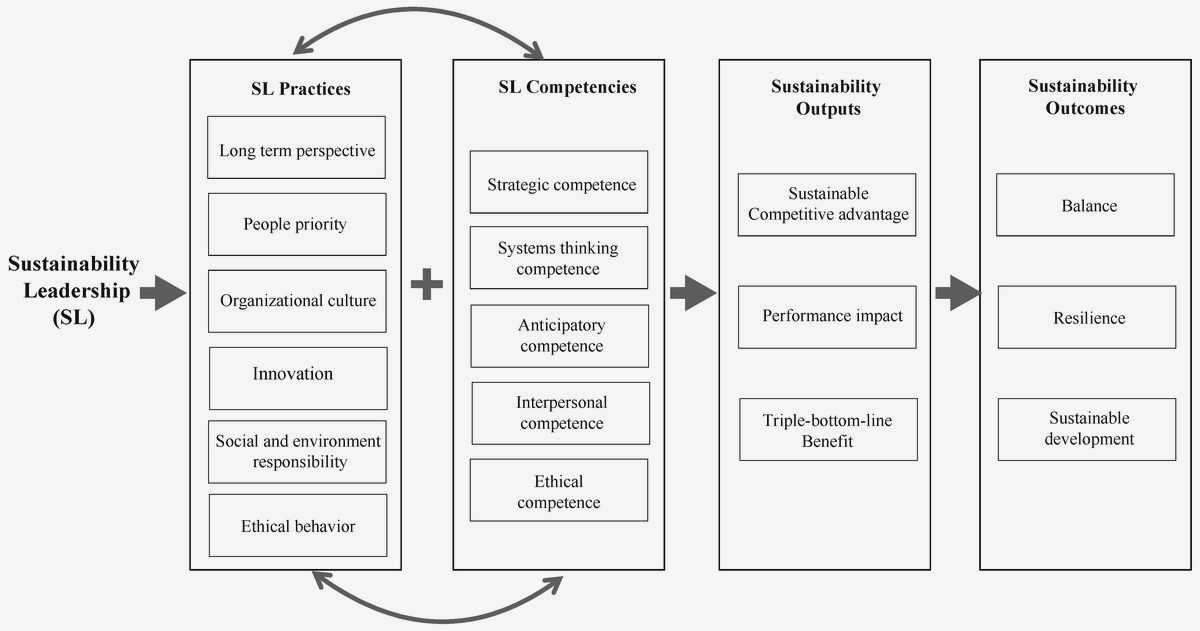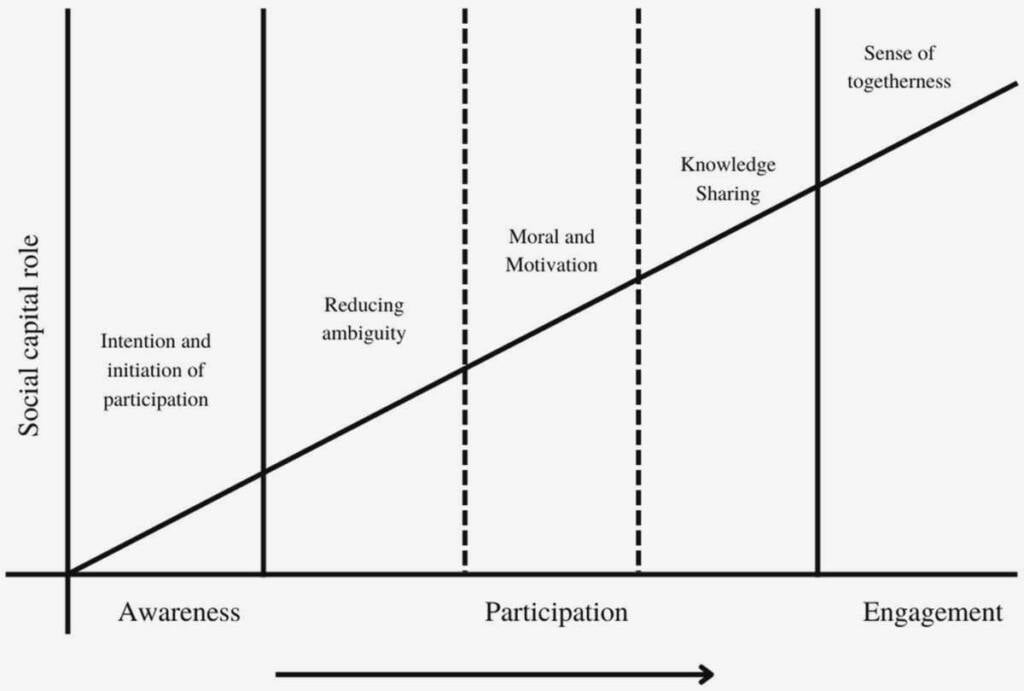In a rapidly changing world, it is crucial for nonprofits to play a pivotal role in driving sustainable development in civil society. With their mission-driven approach and focus on social impact, nonprofits have the power to bring about lasting change and address the pressing challenges faced by communities around the globe.
One key aspect of driving sustainable development lies in the ability of nonprofits to foster collaboration and partnerships. By working together with governments, businesses, and other stakeholders, nonprofits can leverage their expertise, resources, and networks to create innovative solutions and implement impactful strategies. This collaborative approach allows for a more holistic and integrated approach to development, leading to more effective and sustainable outcomes.
Furthermore, nonprofits can drive sustainable development by focusing on capacity-building and empowering local communities. Through education, training, and skill development initiatives, nonprofits can equip individuals and communities with the tools and knowledge they need to overcome challenges and achieve long-term development. By empowering communities to become active participants in their own development, nonprofits can create a sustainable and self-sufficient environment.
Additionally, nonprofits can drive sustainable development by advocating for policy changes and systemic reforms. By engaging in research and analysis, nonprofits can identify the root causes of social issues and propose evidence-based solutions. By advocating for policy changes, nonprofits can influence governmental decisions and create an enabling environment for sustainable development. This strategic approach allows nonprofits to address not only the symptoms but also the underlying causes of social issues, leading to long-lasting change.
In conclusion, nonprofits play a crucial role in driving sustainable development in civil society. By fostering collaboration, empowering communities, and advocating for policy changes, nonprofits can create lasting change and address the pressing challenges faced by communities around the world. It is through their mission-driven approach and focus on social impact that nonprofits can pave the way for a more sustainable and equitable future.
The Role of Nonprofits in Promoting Sustainable Development
Sustainable development is a crucial goal for societies around the world, as it seeks to address the needs of the present without compromising the ability of future generations to meet their own needs. Nonprofit organizations play a critical role in promoting sustainable development by focusing their efforts on creating positive change in civil society.
1. Advocacy and Policy Influence: Nonprofits have the power to influence policies and advocate for the implementation of sustainable practices at local, national, and international levels. Through research, data analysis, and raising awareness, nonprofits can shape public opinion and contribute to the development of sustainable policies and practices.
2. Community Engagement and Education: Nonprofits can actively engage with communities to promote sustainability. They can organize workshops, seminars, and awareness campaigns to educate individuals about the importance of sustainable development and provide them with the knowledge and skills needed to make positive changes in their own lives and communities.
3. Collaboration and Partnerships: Nonprofits have the ability to bring together various stakeholders, including governments, businesses, and local communities, to collaborate on sustainable development initiatives. By fostering partnerships, nonprofits can leverage collective expertise, resources, and influence to drive long-lasting change and implement sustainable practices across different sectors.
4. Capacity Building: Nonprofits can contribute to sustainable development by building the capacity of individuals and organizations. This includes providing training, mentorship, and support to strengthen the skills and knowledge needed to implement sustainable practices, manage resources effectively, and create lasting impact in their communities.
5. Monitoring and Evaluation: Nonprofits can play a pivotal role in monitoring and evaluating sustainable development initiatives. By measuring and assessing the impact of projects and programs, nonprofits can identify areas for improvement, ensure accountability, and provide evidence-based recommendations to drive sustainable change.
In conclusion, nonprofits have a unique role in promoting sustainable development by exercising advocacy, engaging communities, fostering collaborations, building capacity, and monitoring progress. Through their diverse efforts, nonprofits can contribute to creating lasting change and driving sustainable development in civil society.
Collaborative Efforts for Sustainable Development in Civil Society
Collaboration plays a crucial role in driving sustainable development in civil society. Nonprofits have a unique opportunity to work together with different stakeholders to create lasting change and address complex social issues.
1. Multi-stakeholder partnerships: Nonprofits can collaborate with government agencies, businesses, and community organizations to combine resources, expertise, and networks. By bringing together diverse perspectives and resources, these partnerships can generate innovative solutions and maximize impact.
2. Knowledge sharing and capacity building: Collaborative efforts should focus on sharing best practices, lessons learned, and research findings. Nonprofits can contribute by offering training programs, workshops, and seminars to build the capacity of civil society organizations, enabling them to implement sustainable development initiatives effectively.
3. Advocacy and policy influence: Collaboration can strengthen the voice of civil society in advocating for policy changes that support sustainable development. By uniting and coordinating their efforts, nonprofits can influence policy decisions and promote the adoption of laws and regulations conducive to long-term societal progress.
4. Resource pooling: Nonprofits can collaborate to pool resources, both financial and non-financial, to increase the scale and reach of their programs. This could include sharing office spaces, equipment, volunteers, or jointly fundraising for specific projects.
5. Monitoring and evaluation: Collaboration is essential for effective monitoring and evaluation of sustainable development projects. Nonprofits can work together to develop common indicators and evaluation frameworks, facilitating the collection and analysis of data to assess the impact of their initiatives.
6. International partnerships: Nonprofits can engage in cross-border collaborations to learn from international best practices and leverage global expertise. By partnering with organizations from different countries, they can tap into diverse knowledge and experiences, leading to more comprehensive and impactful solutions.
7. Community engagement: Collaboration with local communities is vital for sustainable development in civil society. Nonprofits should involve community members in the planning, implementation, and monitoring of initiatives to ensure they meet their needs and priorities.
By fostering collaborative efforts, nonprofits can create a strong foundation for sustainable development in civil society. Strategic partnerships, knowledge sharing, advocacy, resource pooling, and community engagement are all essential components in driving lasting change and achieving a more equitable and sustainable future.
Innovative Approaches to Sustainable Development in Nonprofits
The nonprofit sector plays a crucial role in driving sustainable development in civil society. In order to create lasting change and address complex challenges, nonprofits are constantly seeking innovative approaches to achieve their goals.
1. Collaboration and Partnerships
One innovative approach to sustainable development is fostering collaboration and partnerships. Nonprofits can work together with other organizations, government agencies, and communities to pool resources, share expertise, and maximize their impact. By leveraging collective knowledge and resources, nonprofits can create more effective and sustainable solutions to societal issues.
2. Technology and Innovation
Technology and innovation are transforming the nonprofit sector and enabling organizations to drive sustainable development. Nonprofits are embracing digital tools and platforms to improve their operations, reach broader audiences, and engage stakeholders. Through innovative technologies such as artificial intelligence, data analytics, and online platforms, nonprofits can increase their efficiency, effectiveness, and transparency in delivering their programs and services.
3. Social Entrepreneurship
Social entrepreneurship is another innovative approach that nonprofits are adopting to drive sustainable development. By applying business principles and practices, nonprofits can create social enterprises that generate revenue while addressing social and environmental issues. Social enterprises can be financially self-sustainable and have a long-term impact on the communities they serve.
4. Outcome Measurement and Impact Evaluation
Nonprofits are increasingly focusing on outcome measurement and impact evaluation to ensure sustainable development. By measuring and evaluating the outcomes and impact of their programs, nonprofits can identify areas for improvement, make data-driven decisions, and demonstrate their effectiveness to stakeholders. This approach enhances accountability, transparency, and the ability to create lasting change.

In conclusion, nonprofits are embracing innovative approaches to drive sustainable development in civil society. Through collaboration and partnerships, technology and innovation, social entrepreneurship, and outcome measurement, nonprofits can create lasting change and address the complex challenges of our time.
The Importance of Leadership in Driving Lasting Change
In any organization, leadership plays a crucial role in driving lasting change. Nonprofits, in particular, rely heavily on effective leadership to steer their mission and achieve sustainable development in civil society.
Firstly, strong leadership is essential in setting a clear vision and direction for the nonprofit. Leaders must have a deep understanding of the issues at hand and be able to articulate a compelling vision that inspires and motivates both staff and stakeholders. By defining a clear path forward, leaders create a sense of purpose and direction, which is vital in driving lasting change.
Furthermore, effective leaders cultivate a culture of success and innovation within the nonprofit. They create an environment where team members feel empowered to take risks, think creatively, and challenge the status quo. By encouraging a culture of continuous learning and improvement, leaders foster an atmosphere of innovation, which is essential for driving lasting change in civil society.
Moreover, leadership involves building strong partnerships and collaborations. Nonprofits cannot drive lasting change on their own; they often need to work alongside other organizations, government bodies, and communities. Effective leaders have the ability to build and nurture strategic partnerships that amplify the impact of the nonprofit’s work. By fostering collaboration and harnessing the collective power of diverse stakeholders, leaders can drive sustainable development and create systemic change.
In conclusion, leadership is a critical component in driving lasting change in civil society through nonprofits. Effective leaders have the ability to set a clear vision, foster innovation, and build strong partnerships. By embracing these key leadership qualities, nonprofits can create a lasting impact and contribute to sustainable development in their respective communities.
Empowering Communities for Sustainable Development
Empowering communities is a crucial aspect of driving sustainable development in civil society. When communities are empowered, they become active participants in their own development, taking ownership of projects and initiatives that address their specific needs.
Engaging local leaders: One way to empower communities is by engaging local leaders in the decision-making process. By involving community leaders in planning and implementation, their knowledge and expertise can be harnessed to ensure that development initiatives are truly responsive to the needs and aspirations of the community.
Enhancing capacity: Another important aspect of community empowerment is enhancing their capacity to address their own challenges. This can be done through providing training and resources that enable community members to develop skills and knowledge in areas such as project management, financial literacy, and sustainable agriculture. By equipping communities with the necessary tools, they can take charge of their own development and create lasting change.
Building partnerships: Collaboration with other stakeholders is also key to empowering communities. Nonprofits can play a significant role in facilitating partnerships between communities, government agencies, and other organizations that have a shared interest in sustainable development. By fostering these collaborations, communities can access a wider range of resources and expertise, leading to more effective and sustainable solutions.

Celebrating local culture: Lastly, empowering communities for sustainable development requires a recognition and celebration of the unique culture and heritage of each community. By valuing and preserving local traditions, nonprofits can help communities maintain a strong sense of identity and pride, which in turn fuels their motivation and commitment to driving sustainable change.
In conclusion, empowering communities is essential for driving sustainable development in civil society. By engaging local leaders, enhancing capacity, building partnerships, and celebrating local culture, nonprofits can support communities in becoming active agents of change, creating lasting impact for themselves and future generations.
Building Partnerships for Lasting Change in Civil Society
Collaboration and Cooperation
In order to drive lasting change in civil society, building strong partnerships and fostering collaboration and cooperation is essential. Nonprofits need to work together with other organizations, such as government agencies, businesses, and community groups, to address complex social issues. By combining resources, expertise, and networks, these partnerships can have a greater impact and achieve sustainable development goals.
Shared Goals and Vision
Partnerships for lasting change in civil society are most effective when all stakeholders share common goals and have a shared vision of the future. Nonprofits should seek out partners who align with their mission and values, as well as those who have a similar understanding of the problem at hand. This shared sense of purpose creates a solid foundation for collaboration and ensures that everyone is working towards the same objectives.
Effective Communication and Trust
Building partnerships for lasting change requires effective communication and a foundation of trust. Nonprofits must establish open lines of communication with their partners, sharing information, ideas, and challenges. Transparent and honest communication fosters trust among stakeholders, which is crucial for long-term collaboration. Trust enables partners to work together more effectively and overcome obstacles that may arise during the process of driving sustainable development.
Resource Sharing and Capacity Building
Partnerships for lasting change can also involve resource sharing and capacity building. Nonprofits can collaborate to pool their resources, whether it be funding, human resources, or expertise. This allows for the effective utilization of resources and ensures that they are directed towards initiatives that will have the greatest impact. Additionally, partners can engage in capacity building activities to strengthen the skills and capabilities of the organizations involved, enhancing their ability to drive lasting change in civil society.
Measuring Impact and Continuous Improvement
Partnerships for lasting change should incorporate mechanisms for measuring impact and promoting continuous improvement. Nonprofits and their partners should establish clear metrics and evaluation methodologies to assess the effectiveness of their initiatives. This data-driven approach allows for evidence-based decision-making and enables partners to learn from their experiences, make adjustments, and continuously improve their strategies for driving sustainable development in civil society.
The Role of Technology in Driving Sustainable Development
In today’s digital age, technology plays a significant role in driving sustainable development across various sectors. With the rapid advancement of technology, non-profit organizations have the opportunity to leverage its power to create lasting change in civil society.
Enhancing Access to Information: Technology is revolutionizing access to information, enabling nonprofits to disseminate relevant and timely information to communities that need it the most. Through digital platforms, non-profits can educate and empower individuals about sustainable development practices, providing them with the knowledge and tools to make informed decisions.
Facilitating Collaboration and Engagement: Technology has transformed how nonprofits collaborate with stakeholders and engage with their target audience. Online platforms and social media channels provide a space for organizations to connect with like-minded individuals, share best practices, and mobilize resources effectively. This increased connectivity allows for greater collaboration, resulting in more effective and sustainable development efforts.
Improving Efficiency and Effectiveness: Technology has the potential to streamline nonprofit operations and increase efficiency. With the use of data analytics and automation, organizations can optimize their resource allocation, track progress, and measure impact more accurately. This improved efficiency allows nonprofits to maximize their impact and achieve sustainable development goals more effectively.
Enabling Financial Inclusion: Technology has the power to promote financial inclusion among marginalized communities, helping them break the cycle of poverty and contribute to sustainable development. Through mobile banking and digital payment solutions, nonprofits can provide access to financial services and resources, empowering individuals and enabling them to participate in economic activities.

Empowering Innovation: Technology fosters innovation within the non-profit sector, enabling organizations to develop creative solutions to complex social and environmental challenges. From renewable energy solutions to online education platforms, technology-driven innovations have the potential to drive sustainable development by addressing key issues and creating scalable impact.
In conclusion, technology plays a crucial role in driving sustainable development within civil society. By enhancing access to information, facilitating collaboration, improving efficiency, enabling financial inclusion, and empowering innovation, technology empowers non-profit organizations to create lasting change and drive sustainable development for the benefit of communities worldwide.
Measuring and Evaluating the Impact of Nonprofit Initiatives
Importance of Measurement and Evaluation
Measuring and evaluating the impact of nonprofit initiatives is crucial for several reasons. Firstly, it allows nonprofits to assess the effectiveness of their programs and interventions and identify areas for improvement. By tracking and analyzing data, nonprofits can determine whether their initiatives are achieving their intended outcomes and make necessary adjustments to ensure long-term success.
Measurement and evaluation also play a key role in accountability and transparency. Donors and stakeholders want to see evidence of impact and return on investment to ensure that their resources are being utilized effectively. By providing robust measurement and evaluation data, nonprofits can build trust with donors and demonstrate the value of their initiatives.
Methods and Approaches
There are multiple methods and approaches to measuring and evaluating the impact of nonprofit initiatives. One commonly used approach is quantitative data analysis, which involves collecting and analyzing numerical data to quantify the impact of the initiative. This can include tracking metrics such as the number of beneficiaries served, changes in specific indicators, or cost-effectiveness ratios.
Qualitative methods, such as interviews, focus groups, and case studies, can provide valuable insights into the lived experiences and perspectives of individuals impacted by the initiative. These methods can help nonprofits understand the deeper, contextual factors that influence outcomes and inform program modifications.
Additionally, combining both qualitative and quantitative data through mixed methods approaches can provide a more comprehensive understanding of impact. This approach allows nonprofits to capture both the statistical significance of their initiatives and the human stories and experiences behind the numbers.
Challenges and Considerations
Measuring and evaluating the impact of nonprofit initiatives can be challenging due to various factors. One challenge is defining and selecting appropriate indicators and metrics that align with the specific goals and outcomes of the initiative. Nonprofits must carefully consider which data points are most meaningful and reliable for measuring impact.
Another challenge is ensuring data quality and accuracy. Nonprofits need robust data collection systems in place to ensure that the data they collect is valid, reliable, and representative of the target population. This may require investing in training and capacity-building initiatives to strengthen data collection and analysis skills.
Lastly, it is important to consider the ethical implications of measuring and evaluating impact. Nonprofits must ensure that data collection processes are conducted ethically, protecting the privacy and rights of individuals involved. Transparent and responsible data management practices are essential.
Scaling Up Successful Models for Sustainable Development
Introduction:
As nonprofits strive to drive sustainable development in civil society, scaling up successful models becomes essential. While local initiatives may have positive impacts at a small scale, replicating and expanding these models can lead to greater and more widespread change. This article explores the importance of scaling up successful models for sustainable development and the strategies that nonprofits can employ to achieve this.
1. Identify Successful Models:
Nonprofits need to identify the models that have already proven to be successful in creating sustainable development. This involves conducting research, gathering data, and collaborating with other organizations to understand what works and why. By identifying these successful models, nonprofits can learn from their strategies and adopt similar approaches in their own work.
2. Collaborate and Share Knowledge:
Collaboration among nonprofits and knowledge-sharing play a crucial role in scaling up successful models. By working together, organizations can combine their resources, expertise, and networks to achieve larger-scale impact. Additionally, sharing knowledge and best practices ensures that successful models are replicated accurately and effectively, avoiding pitfalls and maximizing their impact.
3. Mobilize Resources:
Scaling up successful models requires adequate resources, both financial and human. Nonprofits need to mobilize funding from various sources, including grants, donations, and partnerships with businesses and governments. It is also important to invest in building the capacity of the organization and its staff to effectively implement and manage the scaled-up initiatives.
4. Adapt to Local Contexts:
While scaling up, nonprofits must adapt successful models to suit different local contexts. This involves understanding the unique needs and challenges of each community, engaging local stakeholders, and ensuring that the scaled-up initiatives are culturally sensitive and relevant. By adapting successful models, nonprofits can increase their chances of success and create lasting change.

Conclusion:
Scaling up successful models is crucial for nonprofits to drive sustainable development in civil society. By identifying effective strategies, collaborating, mobilizing resources, and adapting to local contexts, organizations can replicate and expand successful initiatives, maximizing their impact and creating lasting change on a larger scale.
The Future of Sustainable Development: Challenges and Opportunities for Nonprofits
The future of sustainable development presents both challenges and opportunities for nonprofit organizations. With increasing global awareness and urgency around issues such as climate change, poverty alleviation, and social inequality, nonprofits have a unique role to play in driving meaningful change in civil society.
One of the major challenges nonprofits face in the future is the need to adapt to rapidly changing social, economic, and technological landscapes. The world is becoming more interconnected than ever before, and nonprofits must navigate this complex web of factors to effectively address the root causes of social and environmental problems. This requires organizations to constantly stay updated on the latest research, trends, and best practices, and to foster a culture of innovation and flexibility.
However, along with these challenges come numerous opportunities for nonprofits to make a lasting impact. As the demand for sustainable solutions continues to grow, there is a greater need for cross-sector collaboration and partnerships. Nonprofits can leverage their unique expertise, networks, and grassroots connections to bring together diverse stakeholders and work towards shared goals. By collaborating with businesses, governments, and other civil society organizations, nonprofits can create more comprehensive and sustainable solutions that have a greater chance of long-term success.

Another opportunity lies in the power of technology to drive sustainable development. The digital revolution has transformed the way we communicate, access information, and solve problems. Nonprofits can harness this power to connect with a wider audience, raise awareness, and mobilize individuals towards collective action. Social media platforms, crowdfunding websites, and online engagement tools offer nonprofits new avenues for fundraising, community building, and advocacy.
In addition, nonprofits have the opportunity to prioritize inclusivity and empowerment in their approach to sustainable development. By engaging marginalized communities, amplifying their voices, and involving them in decision-making processes, nonprofits can ensure that their work is truly impactful and representative. This requires a commitment to diversity, equity, and inclusion at every level of the organization.
Overall, the future of sustainable development presents both challenges and opportunities for nonprofits. By staying adaptable, engaging in cross-sector collaboration, leveraging technology, and prioritizing inclusivity, nonprofits can continue to play a critical role in driving meaningful and lasting change in civil society.





